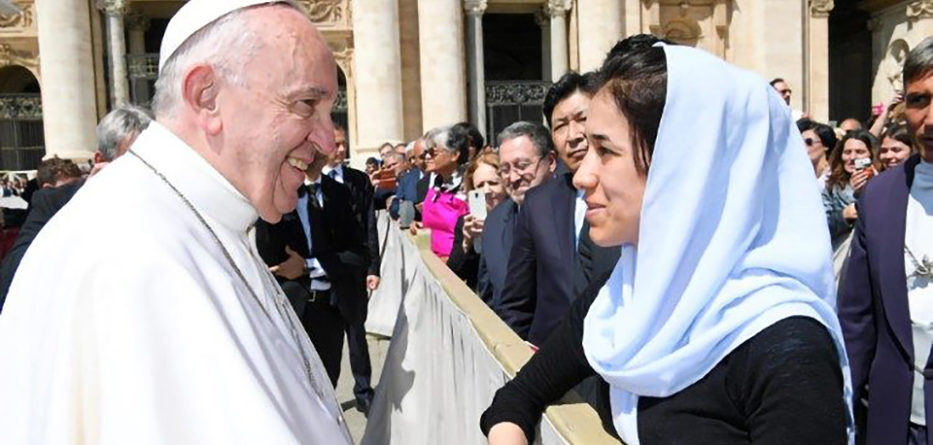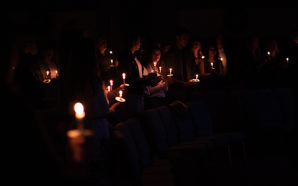Pope Francis’s brief but historic visit to Iraq appears to have already become old news. Indeed, the Holy Father had not landed in Rome on his return trip before reporters shifted attention to future papal visits, including the scheduled September visit to Hungary and the likelihood of proposed visits to Lebanon and Argentina. Then, the CDF’s Responsum regarding the blessing of same-sex unions appeared, preoccupying Catholics on both sides of the political spectrum. In this context, the prompt passing of the Pope’s recent tour from our collective memory, coupled with what Mark Chamoun described as the inevitable “cynical declarations that ‘this [trip] won’t change anything,’” raises questions about the legacy of this visit to the region. Not least among these is the essential question of what does the trip mean?—a question which, Chamoun suggests, Catholics the world over will answer either through our collective action or through our inaction.
Pope Francis has repeatedly called on us to understand the parable of the Good Samaritan as a way of life. Reflecting on the meaning of the pope’s recent visit through this lens raises important questions: have we lingered on the side of the road with the wounded man long enough to be able to move him without causing further injury? Have we articulated a clear and definite commitment to return to settle accounts as needed?
I do not mean to belittle Iraq’s historic and cultural achievements when I compare it to the robbed and wounded man on the road to Jericho. As the parable itself teaches, vulnerability and victimisation do not lessen human dignity or worth; rather, they call for sympathy and action from those fortunate enough to be in positions of comparative power, security, or means. For those who strive to live this Gospel message, stories of suffering can serve as calls to action, and the most disenfranchised among us can, paradoxically, bring about the greatest social change.
In recounting the discernment process that led to his decision to visit Iraq, Pope Francis highlighted the role that a young victimised woman had played in his deliberations:
“I read it [The Last Girl by Nadia Murad] in Italian. … It is the story of the Yazidi. And in it Nadia Murad describes something terrifying, terrifying. I recommend you read it. At certain points, since it is biographical, it might seem rather depressing, but for me this was the real reason behind my decision. That book affected me.” (emphasis added)
Invited to visit Iraq by senior ambassadors and the nation’s president, Francis was ultimately convinced to visit the war-ravaged country not by a head or representative of state, but rather by a victim of a brutal and (as the recent Open Letter to the Holy See reminds us) continuing genocide.
Inspired by the recommendation of the Holy Father and by Matt Kappadakunnel’s recent exhortation to encounter others “by learning about them from their own advocates,” I bought and read Murad’s The Last Girl. First published in 2017, it can hardly be considered a new release, but I doubt that I was alone in not having paid much attention to it before now even though Murad was awarded the Nobel Peace Prize in 2018. Regardless, her account of Yazidi persecution cannot be considered old news when we consider that, despite the dismantling of the Islamic State’s caliphate by an international coalition of armed forces, more than 400,000 Yazidis remain in displacement and 2,800 Yazidi children and women remain in captivity, still enduring the conditions Murad describes in her autobiography. The evil the book describes is not only historic; it endures today.
Among the many tragedies and atrocities that the book presents in its understated way, one moment stands out as a beacon of light, highlighting the human capacity to endure and embodying a present-day manifestation of the Good Samaritan parable. Briefly, Nadia Murad capitalises on the temporary absence of her captor to flee enslavement and seek sanctuary wherever she can in the IS-controlled city of Mosul. After moving surreptitiously through the city for hours, unsure which doors would lead to recapture and which might lead to safety, Murad approaches the house of Omar Abdel Jabar (called Nasser in the book).
Although poor and vulnerable themselves, this family of Sunni Muslims opens their doors to the young Yazidi stranger who knocks in the night. What’s more, they contact one of her brothers to coordinate a dangerous trip from Mosul to a refugee camp where Murad will be able to reunite with surviving members of her family. They give her safe haven while the perilous mission is being planned and equip her with clothes that they can ill afford to spare. Then, Jabar literally risks life and limb to accompany her through IS-controlled checkpoints and over mine-infested roads and bridges.
While the rescue mission is successful insofar as Murad reaches the refugee camp and reconnects with surviving family members, it is in many ways a minor victory: the murdered remain dead; the living are still displaced and dispossessed of their property and land; the ravaged cannot forget. No Nobel Prize can compensate for the suffering. Jabar, too, suffers for having shown compassion: Rebecca Collard reports that “The day after Jabar returned to Mosul, there was a heavy knock on the door. This time it was ISIS.” Forced to flee his homeland, leaving behind his pregnant wife and young child, Jabar becomes an exile, waiting years for formal refugee status while receiving threats from IS supporters. By any objective measure, life appears pretty bleak.
If Disney was in charge of shaping history, we would be rapidly approaching a great “however” moment; the mood would change from despair to triumph, and all the good characters, we would be told, proceed to live happily ever after. The reality is not so tidy. Good Samaritans go unrecognised or even persecuted for the assistance they offer. Some may find that they become victims in turn, beaten and robbed on the side of the road. Certainly, the ur-type of Good Samaritan, the Good Shepherd Jesus Christ, met such a fate when he walked on earth. Why should we be exempt?
Perhaps the greatest challenge in the parable of the Good Samaritan is the part Jesus leaves unsaid—the aftermath of the act of kindness. Sinner as I am, I can’t help but wonder how the Good Samaritan might have struggled to convince his wife that the extravagant spending of the family’s resources on a complete stranger was worthwhile. How would he have handled the temptation to resentment the next time a Hebrew avoided him on the road? How would he have felt if there was no aftermath at all—just a complete lack of recognition that he had done anything out of the ordinary?
In Matthew 19:8-9, Jesus tells his disciples that God reveals truth incrementally, as we increase our readiness to receive it. He never gives us more than we can handle though he may compel us to realise that our capacity is greater than our confidence. For my part, I don’t know how I can best respond to Murad’s account of present-day Samaritans or to Pope Francis’s mission to Iraq. What I do know is that doing nothing—simply letting the trip and its mission pass from mind—is the best way to ensure that I fall short of living the Gospel truth in my life.
Jesus doesn’t tell his followers what happens after the Good Samaritan secures the wounded man in the inn. It may be that his disciples were simply not ready to accept the fact that, at least on Earth, good deeds go unrewarded. Alternatively, it might just be that he has left it to us to decide how that story ends.
Tobi Kozakewich, PhD, is a Catholic wife, mother, and aspiring editor/writer. She’s taught at various levels for the past 20 years and has published articles on Canadian Literature.
With thanks to Where Peter Is and Tobi Kozakewich, where this article originally appeared.








